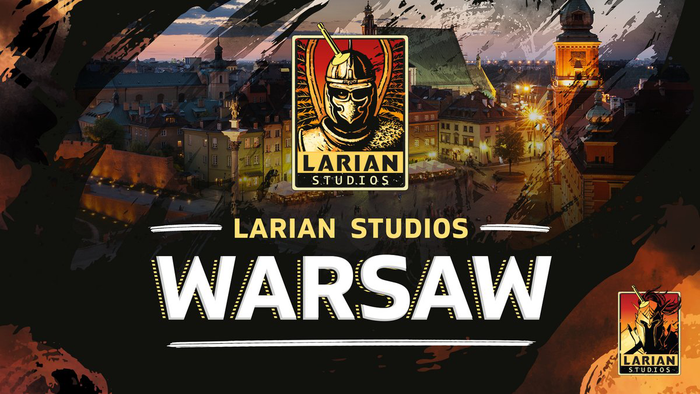
Featured Blog | This community-written post highlights the best of what the game industry has to offer. Read more like it on the Game Developer Blogs.
Designing a Hardcore Game for the Mobile Masses
Designing a Hardcore Game for the Mobile Masses - game design and features of Shadow Fight 2


Traditionally, there haven’t been many successful fighting games built for mobile platforms. At best, there have been cases of console games ported to iOS, Android, and Windows, but few companies have managed to fully adapt the hardcore genre for a wider mobile audience. My company Nekki has attempted to do such with our game Shadow Fight 2, a midcore mobile fighting game that is our stab at broadening the market for this particular type of gaming experience. Along the way, we’ve learned some valuable lessons about redesigning hardcore genres for mobile audiences.
We built the original Shadow Fight back in 2001 - it was an attempt to produce a simple fighting RPG during our college years. A short 10 years after it’s development, the game witnessed a sudden viral popularity, and we understood that there was a new, unexpectedly high demand for the genre.

Shadow Fight Prototype
Shadow Fight Prototype
The sole problem was that Shadow Fight relied heavily on the skill of the gamer, meaning we had to automatically adjust the difficulty of the enemy based on each user, and include other supports. Because each gamer’s skill level is so vastly different, we lost a lot of users who found the gameplay either too easy or too difficult to master.
When we began to build for mobile, our first app was Vector - a parkour action game. We encountered the same issue with difficulty levels there as well - a common and pervasive problem for action and arcade games. In spite of these hiccups, both games have managed to be successful, in large part due to the free-to-play niches they occupy.
When the time came to make our next mobile game, we began brainstorming in earnest to find the perfect niche we could occupy. On the one hand, there were few players in the mobile fighting genre space, leaving the market wide open. But there was also a definite risk involved in making the game too hardcore, so it wouldn’t appeal to the mobile masses. Fighting games are one of the most hardcore game genres, and at the time imagining one on a touch-screen was daunting. In the end, we liked the idea of a mobile Shadow Fight so much that we decided the risk was worth it.
We began by developing the fighting system. Classic fighting games are all about the ability of the gamer to learn difficult combos - powerful strikes can be hard to execute because of a complicated combination of buttons. The first thing we got rid off when building Shadow Fight 2 was this tricky mix of buttons. All attacks in the game are just the combination of any direction plus an action button (of which we’ve boiled it down to just two), and blocking is done automatically. Keeping the controls simple means that any gamer can pick the game up and learn on-the-fly, making it accessible to a broad audience.

Attacks are executed with simple combinations
The second thing that we did was connect the fighting style to a weapon, so that the character fights differently with each new weapon of choice. For every type of weapon we built seven attacks, which keeps things simple and allows the gamer to master their battle moves before challenging themselves with a new weapon. Each type of attack fulfils a distinct role within the game: there are slow but powerful ones, long-distance ones, sweeps, throws, etc. For every weapon type, these moves vary greatly in geometry and timing, which is why users have to master the gameplay from scratch with each new selection. For that reason, the game isn’t about different characters, but rather different weapon types. For players this adds a unique and evolving element to the game -- because the weapons change frequently, the player constantly has to learn new hits, which keeps things from getting stale. From a development perspective, this allows us to easily introduce new weapon types to provide fresh content with minimal effort.
We also included the element of chance when building the game. For example, when the gamer’s character gets attacked, in some distinct situations they will go on the offensive and the retaliation will be stronger. The mechanics we built allow for any hit to have a 10% probability of being critical, which will double the damage. With every hit, there is a specific probability that these perks (which have been selected by the player when he leveled up his skills) will be triggered. This is a big change compared to classic fighting games, which don’t generally incorporate random events like critical hits, and instead depend 100% on the abilities of the player. By adding small elements like this, the result of the fight isn’t as dependent on the skill of the gamer anymore - some things just boil down to luck and timing, making the game more exciting and the fights less monotonous.
Simultaneously, we wanted to maintain a certain level of intrigue and challenge within the game. To do this, we decided to build in fairly accurate collisions. To register damage, the weapons in the game have to hit the silhouette of the enemy pretty precisely. As a result, the attack trajectory and pose of the enemy plays an important role. Usually in fighting games, there are conditional zones for collisions that are rectangular, and divided into low, mid and high. Because of this, an attacking hand doesn't necessarily have to strike the enemy visually, but the hit still counts if it lands within these zones, and inaccuracies are hidden with big, bright effects. In Shadow Fight 2, we designed the game so that the hit only counts if the attacking hand (or foot or weapon) actually makes contact with the body of the enemy, and not just a conditional zone. As a result, we’re able to show effective stop-frames of the hit and slow-motion visuals. This adds an intense contact element to the fight, letting players see hairline misses or connecting blows up close, and placing a greater emphasis on the position of the enemy in the game.
The main goal of these design choices was to create a more welcoming gaming experience - if the user hits a button more or less accidentally, it will still generally work out well. This lowers the entry bar for a lot of players. At the same time, if the controls are employed consciously, the depth of the game is dramatically increased enough to hold the interest of more experienced gamers.
Translating a hardcore genre for mobile can be a challenge, as the platform comes with distinct design requirements and new audiences. When creating for these audiences, the key is to simplify the gameplay, while retaining the depth of the experience as a whole. This makes it possible to seek a wider audience who may not have previously explored this type of game, while converting more traditional players of hardcore games to an expanding platform.
Read more about:
Featured BlogsAbout the Author(s)
You May Also Like













